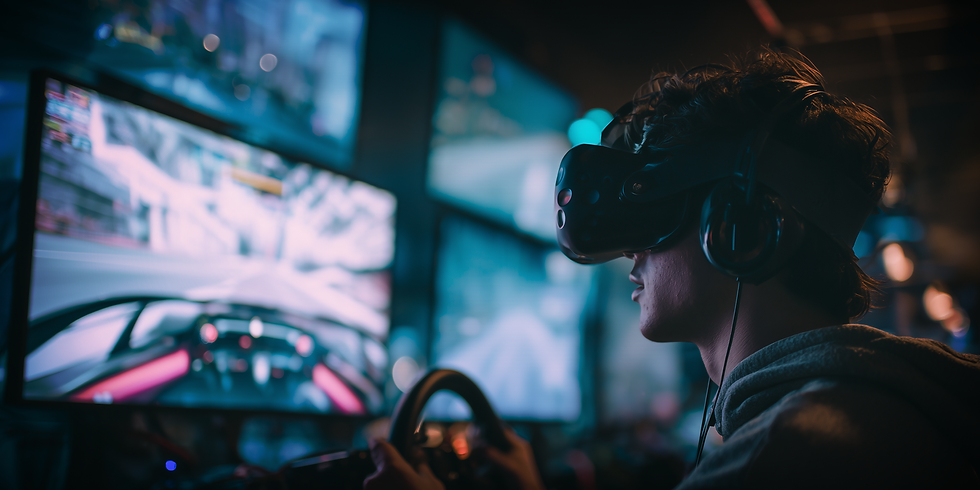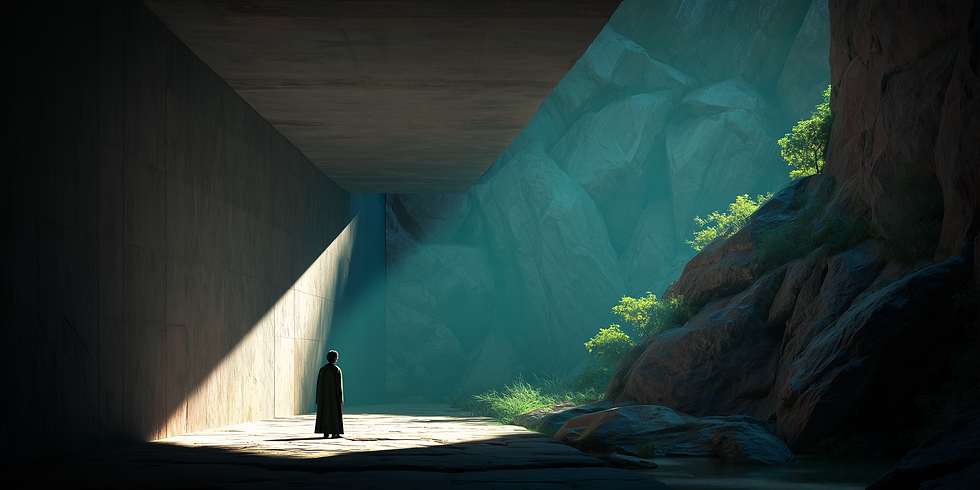The Intersection of Art and Technology in the Gaming Industry
- artMiker Team

- Sep 30
- 4 min read

Art and technology have always danced together in video games. From the blocky sprites of the 1980s to today’s sprawling, photorealistic landscapes, each leap in technology has reshaped what game artists can imagine. But in the last decade, the pace of change has accelerated dramatically. Tools like Virtual Reality (VR), Augmented Reality (AR), and Artificial Intelligence (AI) aren’t just helping artists work faster—they’re redefining what “game art” means.
To understand where we are today, and where we’re headed, let’s take a journey through the past, present, and future of art and technology in gaming.
The Past: From Pixels to Polygons
In the early days of gaming, artistic expression was tightly bound by technology. Designers of the 8-bit and 16-bit eras worked within strict limitations: a handful of colors, low-resolution screens, and tiny memory sizes. Yet even within those constraints, artistry flourished.
Games like Super Mario Bros. and The Legend of Zelda turned simple sprites into icons recognized worldwide. Every pixel mattered, and creativity thrived on constraint. Artists had to convey emotion, story, and personality with just a few shapes and colors.
The 1990s brought the jump to 3D polygons, unlocking new possibilities. Titles like Final Fantasy VII and Tomb Raider introduced characters and worlds that felt dimensional, even if rough by today’s standards. This transition marked a new era where technology enabled artists to think in space, not just in flat planes.
By the 2000s, hardware advances allowed for richer textures, smoother animations, and cinematic cutscenes. Games like Halo and Shadow of the Colossus pushed artistic boundaries, blending technological power with creative ambition. Still, the tools were rudimentary compared to what artists use today.
Lesson from the past: Every leap in technology gives artists new canvases, but it’s the artistry—not just the tech—that makes games memorable.
The Present: VR, AR, and AI Transforming Creation
Today, game art exists in an environment that early developers could only dream of. With modern engines, GPUs, and design tools, artists can create worlds that rival film in scope and beauty. But it’s not just about prettier graphics—it’s about new ways of experiencing and producing art.
Virtual Reality (VR): Immersion as a Canvas
VR places players directly inside a game’s art. Scale, perspective, and detail take on entirely new meaning. In Half-Life: Alyx, for instance, the texture of a wall or the lighting in a cramped corridor feels more immediate because you’re physically present in that space. For artists, this means designing in 360 degrees, ensuring every object holds up under close inspection.
Augmented Reality (AR): Blending Worlds
AR overlays digital art on top of the real world, turning sidewalks, coffee shops, and city parks into canvases. Pokémon GO showed how powerful this could be, transforming ordinary places into magical play spaces. Artists now design characters and effects that feel natural when superimposed on unpredictable real-world backdrops.
Artificial Intelligence (AI): A New Creative Partner
AI has quickly become one of the most talked-about tools in game art. Concept artists use AI-assisted platforms like MidJourney and Stable Diffusion to generate rapid mood boards. AI-driven animation systems streamline rigging and motion capture. Even procedural world-building—once the domain of handcrafted algorithms—is being supercharged with machine learning.
Yet AI is more than a time-saver. It sparks new creative workflows, allowing artists to test styles, iterate quickly, and experiment with forms that might never have been considered otherwise. Still, it raises questions of authorship and originality—debates that the industry is only beginning to wrestle with.
Lesson from the present: Technology is no longer just a tool; it’s a collaborator that shapes how art is imagined, built, and experienced.
The Future: Where Art and Technology Converge
So what’s next? If history tells us anything, the relationship between art and technology will only deepen. Here are some likely directions:
Living Worlds Through AI
Imagine NPCs who not only look unique but behave in unscripted, dynamic ways thanks to AI. Artists won’t just design characters—they’ll design frameworks for characters that evolve with player interaction. Worlds could literally paint themselves in response to choices and moods.
Seamless AR Integration
As AR glasses and headsets become mainstream, entire cities could become stages for interactive art. Artists will design not just assets, but experiences woven into daily life. A mural might animate when viewed through AR, or a storefront might transform into a digital portal during special campaigns.
VR as a Standard Canvas
Right now, VR is still a niche. But as hardware becomes lighter, cheaper, and more powerful, VR could become a baseline for game art. Instead of designing for screens, artists will design primarily for immersion—thinking spatially first and flatly second.
Tools That Blur the Line Between Artist and Machine
Future software will likely integrate AI directly into creation pipelines. Artists might sketch a rough idea, and AI will automatically generate multiple textured, lit variations in seconds. Instead of replacing creativity, this will shift the artist’s role toward curation, refinement, and storytelling.
Lesson for the future: The line between artist, player, and machine will blur, creating new forms of interactive, evolving art.
Final Thoughts
The history of gaming shows one truth: art and technology are inseparable. From the pixelated heroes of the 1980s to today’s AI-assisted VR landscapes, every leap forward in tech has opened new artistic frontiers.
Today, VR, AR, and AI are not just tools—they’re transformative forces reshaping how art is created and experienced. And tomorrow, the canvas will expand even further, turning games into living, evolving works of art.
For players, this means deeper immersion. For businesses, it means new creative possibilities. And for artists, it means embracing a future where imagination is only limited by how boldly we use the tools in front of us.









Comments